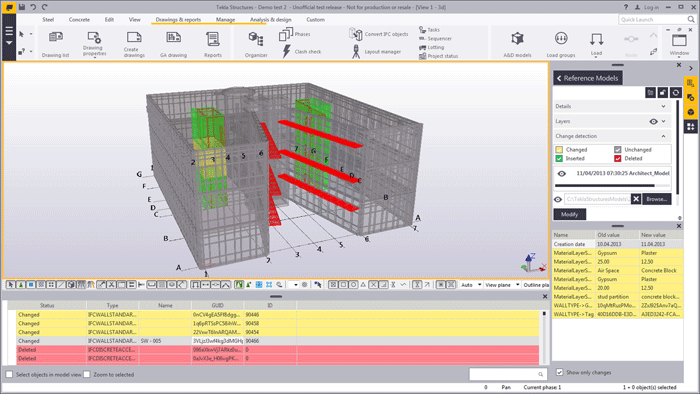New software said to improve construction project workflows through better usability and enhanced collaboration
Trimble has released new versions of its Tekla BIM, analysis and design solutions for engineering and construction. Trimble says Tekla Structures 2016, Tekla Structural Designer 2016 and Tekla Tedds 2016 provide enhanced collaboration and workflow efficiency for structural steel and precast concrete designers, detailers and fabricators, concrete contractors, general contractors and structural engineers.
Tekla Structures 2016, which is used for producing accurate, constructible models of steel and concrete structures, features a new user interface. Customisable menus and easily recognisable icons are designed to allow users to save time and improve modelling efficiency.
The new version is also said to introduce more efficient utilisation of model information, helping find possible flaws during the design phase, when they are simpler to fix compared to rework on the construction site, can bring savings. Users can also create repetitive fabrication information, such as concrete covers for precast elements, which can be automated for increased productivity.
Collaboration has also been enhanced with Industry Foundation Classes (IFC) file change management. When another discipline working on the construction project makes changes, Tekla Structures’ users can now see what has changed in the IFC reference model.
Additionally, visualisation and traceability improvements in Tekla Model Sharing are said to leverage collaboration through sophisticated change management. Trimble says the tool allows team members to work on the same model from any location or time zone to deliver projects faster and with more flexibility. The changes list allows for filtering and searching for specific ones.
Risto Räty, general manager of Trimble Buildings Structures Division, said, “Many of the new features and improvements have been developed to address our customers’ requests. For example, drawing production is faster with functionality improvements and a 2D library that allows users to pick details for their drawings from a collection of ready-made 2D details, such as bolts, instead of drawing them. Reusing customer-specific 2D details saves even more time.”
Tekla Structural Designer 2016 is an engineering tool for analysing and designing buildings. The new version is said to feature major performance enhancements in both modelling and processing time when analysing and designing structures. According to Trimble, it can now also handle even larger and more demanding models.
Interoperability has also been improved with IFC compatibility, the idea being that users can share and review designs with other project disciplines even at a very early stage of the Design-Build-Operate (DBO) workflow.
Tekla Tedds 2016, a solution for automating repetitive structural calculations, includes more choices for the analysis and design of retaining walls, foundations and steel and concrete beams to both the U.S. building codes and Eurocodes.

About Trimble Buildings
Trimble Tekla is a solution within Trimble Buildings’ Engineering and Construction segment, which focuses on solutions that optimise the complete Design-Build-Operate (DBO) lifecycle of buildings. Used in over 150 countries around the world, Trimble Buildings’ solutions are transforming the way the world designs, builds and operates infrastructure and buildings. Indeed Trimble is dedicated to transforming the industry with powerful resolutions that streamline communication and collaboration, such as increasing productivity, reducing waste and optimising schedules, budgets and real estate portfolios. These solutions will enable architects, engineers, contractors, owners, and occupiers to realise greater agility, efficiency and insight.
For more information visit: buildings.trimble.com.
About Trimble
Trimble applies technology to make field and mobile workers in businesses and government significantly more productive. Solutions are focused on applications requiring position or location—including surveying, construction, agriculture, fleet, asset management and mapping. In addition to utilising positioning technologies, such as GPS, lasers and optics, Trimble solutions may include software content specific to the needs of the user. Wireless technologies are utilised to deliver the solution to the user and to ensure a tight coupling of the field and the back office. Founded in 1978, Trimble is headquartered in Sunnyvale, Calif. For more information, visit: www.trimble.com.
If you enjoyed this article, subscribe to AEC Magazine for FREE






